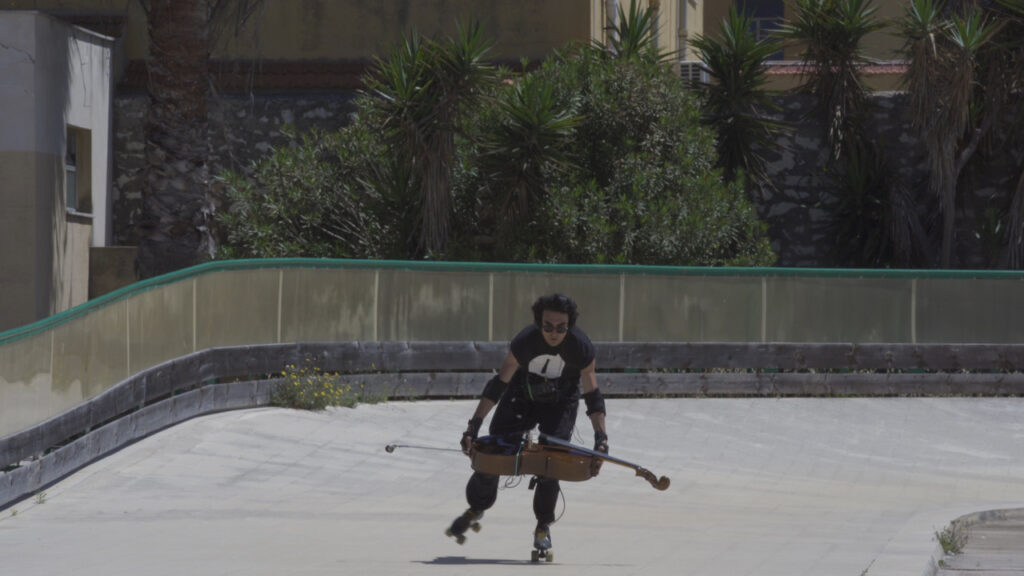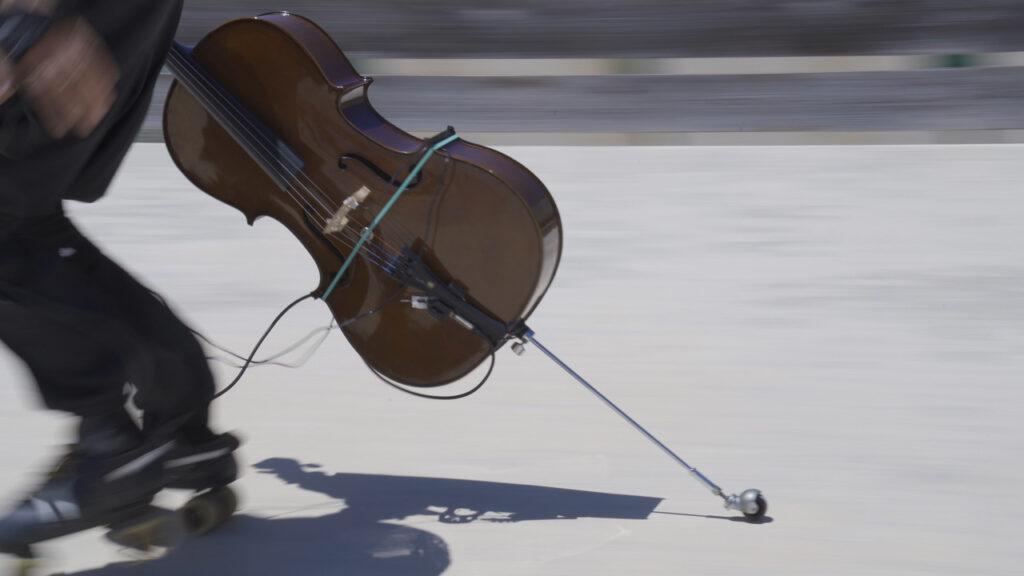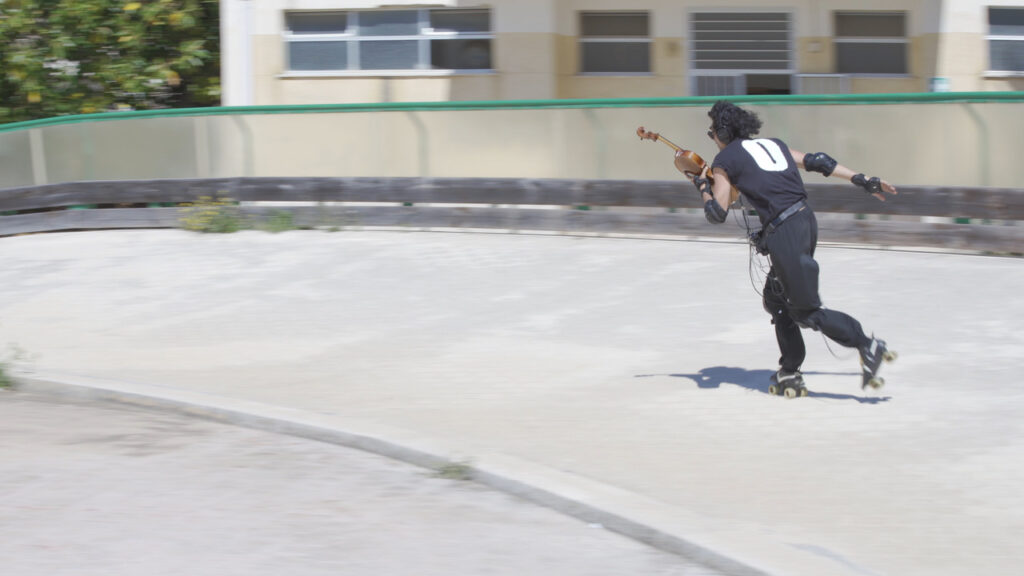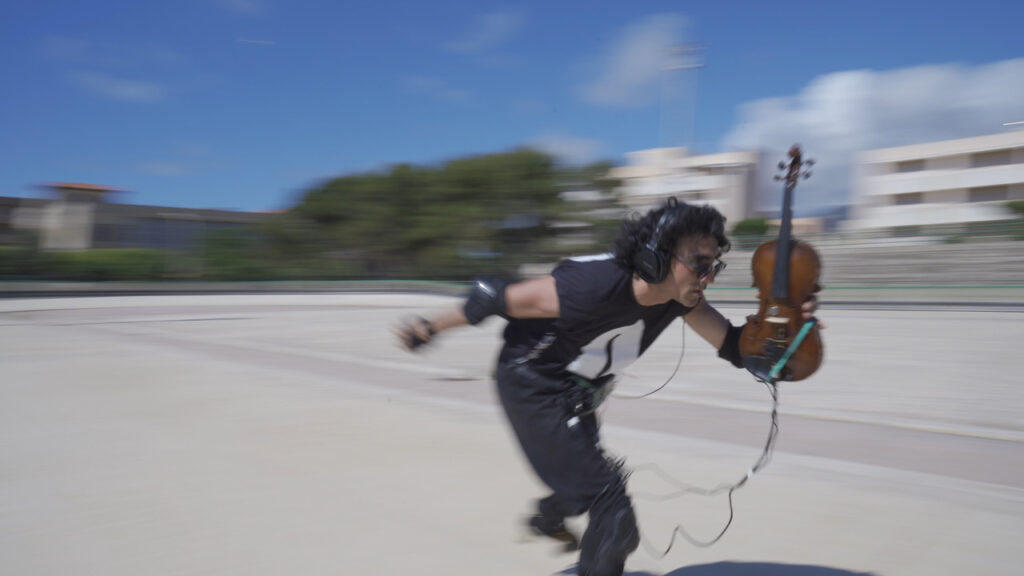“Nothing'” in Arabic is called “Sefr.” Zephyr is the name derived from Greek for the west wind. The linguistic contamination of Mediterranean peoples, traders, confuses the name of a wind with the sound of the word “nulla” (nothing). And so, “zevero” became “zero.” A number that stole the name from a wind, passing from one person to another, from one place to another, in the reaffirming circuit of Life, inherently migratory.
The video/sound installation “Zefir-0” by Alessandro Librio for roller skates, string quartet, and wind is the result of a research project carried out by the artist since 2012, aiming to study the possible interaction between sound and nature.
The microphoned roller skates and the bowed instruments (2 violins, 1 viola, and 1 cello), played through the speed and pressure of the wind, will have four different tunings specifically designed for the execution of the score, performed inside a professional skating rink, also microphoned.
A preliminary study for the project was already carried out in 2012 in Palermo. On that occasion, the artist developed a tuning capable of making a violin vibrate/play through the wind, an element that disrupts the traditional human intervention on the instrument.
Flying down in a paraglider from Monte Grifone (500 meters high), the artist merely controlled the natural harmonics generated by the wind, which in flight diverge radically from traditional violin practice.
In BIRDQUARTET in 2017, on the occasion of the Manifesta12 Biennial of Contemporary Art, for OltreOreto Festival inside the splendid Spasimo Church in Palermo, the single violin from the preparatory studio BALARM will quadruple in the formation of a string quartet (2 violins, 1 viola, 1 cello), an ideal symbol of a compositional order eternally linked to classicism, already symbolically shattered by Librio during the installation NO CLASSICAL QUARTET FOR DEMETRIO (2011, Eb&Fow Gallery, London).
The specific tuning designed to interact with the wind establishes a dialogical relationship between the different instruments and the atmospheric agent, but also between the bows and the performer who, using the speed and pressure of the wind instead of the traditional bow, manages to make the strings vibrate. The musical instruments thus become an elastic subject, like any surface, to the oscillations of the ethereal atmospheric element.





